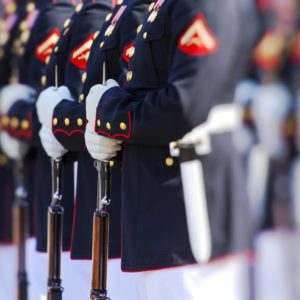America has come a long way in its treatment of veterans. In 1783, its general ambivalence about professional soldiers along with the government’s inability to pay those actually in its service resulted in soldiers besieging Congress in Philadelphia’s Independence Hall, demanding redress. Congress fled to Princeton.
But the Pennsylvania Mutiny, as the larger incident is known, resulted in long-lasting effects for both the nation’s civilians and military: It showcased significant cracks in the Articles of Confederation government, helping set in motion the Constitutional Convention and the inclusion of a constitutional provision for Congress to support federal armies.
It also forced the public to recognize the legitimacy of Gen. George Washington’s insight, that civic virtue alone couldn’t sustain even patriotic citizen-soldiers in a democracy whose foundational principles were a set of individual rights.
Washington had argued during the War of Independence that it wasn’t reasonable or just to expect one set of men to sacrifice their property, comfort and happiness to encounter the vicissitudes of war “to obtain those blessings which every citizen will enjoy … without some adequate compensation.”
But Washington also asked soldiers to take “the most conciliating dispositions” with them on their return to civilianhood, and funnel their energies into farming, commerce, settling the West, or similar endeavors, to nourish purpose in their lives.
As he explained in his Farewell Orders, veterans needed to “prove themselves not less virtuous and useful as Citizens, than they (were) persevering and victorious as soldiers.” Regardless of any contractual obligations on the government’s part, Washington wanted veterans to understand that their wellbeing would depend largely on their own efforts, and on the understanding that “veteran” couldn’t be the sum total of their identity going forward.
Rather, their experience of military service would mutually reinforce the meaning of their democratic citizenship. While acknowledging the difficulties of ironing out what a nation might owe its citizen-soldiers in material terms, Washington was convinced that for the health of veterans and civil society, veterans couldn’t remain a “tribe apart” from their fellow citizens.
With every major military conflict involving Americans since then, the nation has re-evaluated its relationship with the veteran, partly in consequence of the demands each specific war has required it to lay upon the soldier. The changing face of industrialized society, war technology, and thoughts about the role of government have influenced each generation’s consensus, reflected concretely in laws pertaining to veterans’ pensions: The early practice of granting only disability pensions to war veterans grew to include service pensions after the War of 1812, vocational training after World War I, college tuition assistance and low-interest home loans after World War II, and finally to include all who have served in uniform, whether during war or peacetime.
The dynamics of the All-Volunteer Force have further affected national attitudes toward the veteran in the 21st century. After a contentious period surrounding the Vietnam War, Congress and the public today overwhelmingly favor a wide range of public assistance programs for veterans, and regularly allocate billions to the Department of Veterans Affairs to care for a variety of veterans’ needs, from education to health care to headstones.
And by and large, the socio-demographic factors of veterans reflect positively the public’s investment in them. Veterans today are more likely to have completed high school, be married and a homeowner with health insurance, than their non-veteran peers. This October, the Bureau of Labor Statistics revealed a historically low unemployment rate for veterans — 2.7 percent. Similarly, recent research revealed that in 2015, the post-9/11 veteran median household income was $80,000 — compared to the median national income of $68,000.
By multiple markers, veterans are doing well, thanks in part to civilian tax dollars and public programs of the government they swore to preserve and protect while in uniform. But our veterans still deserve better.
Around the same time that WWII veterans were stepping into the middle class thanks to the GI Bill, America’s public education system drastically reduced the time it spent on teaching young Americans the history, principles and institutions of its democratic way of life. Students today spend only 7.6 percent of their school time in social studies, only one part of which is civic education — the most crucial vehicle of transmitting an appreciation of the value of the American political order, and inspiring the individual to invest in the practice of democracy.
American soldiers exist primarily to protect the American people and American democratic principles. Yet how can a nation support such soldiers in the most fundamental way needed, when it no longer much knows what it itself is?

